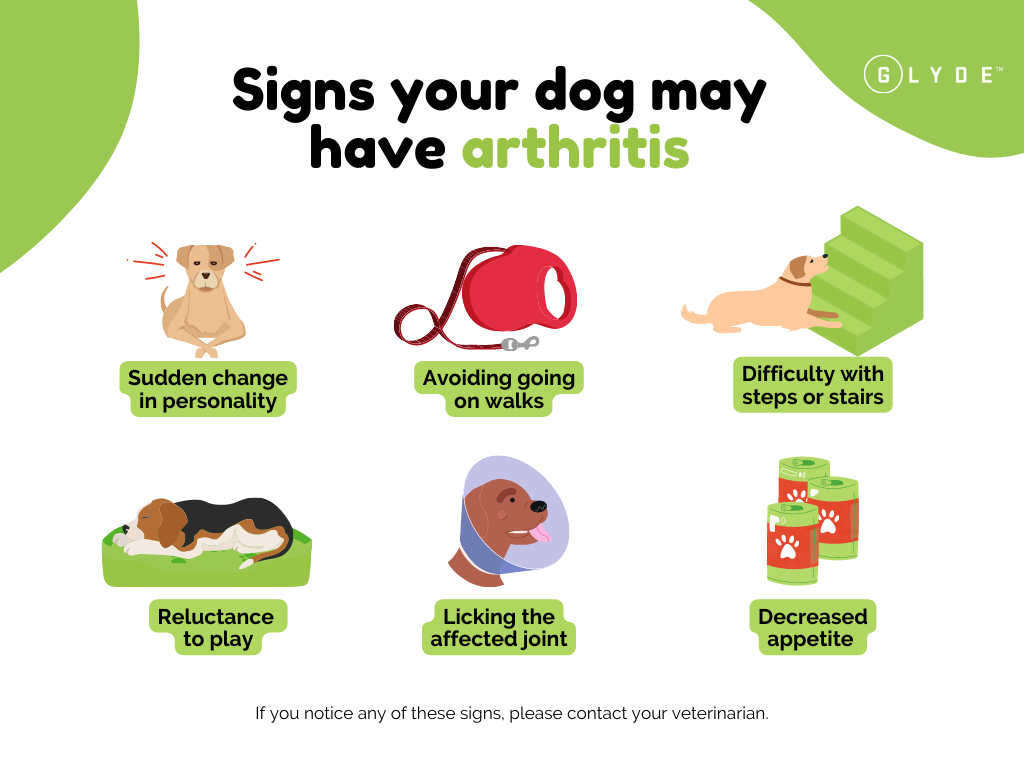May is Arthritis Awareness Month, which focuses on how joint pain can impact mobility issues in humans. Arthritis can also impact the joints of our dogs, and hamper mobility with pain. Now, more than ever, there are a variety of ways to treat arthritis in dogs to help them return to a place of mobility. As we work through the signs of arthritis, how to diagnose the issues of arthritis in our dogs there are also ideas on how to treat arthritis in dogs. While May is Arthritis Awareness Month, let's also make it a Mobile May and try to return our dogs to a place of joint pain relief for dogs for improved mobility. To do this, we offer solutions on how to treat arthritis in dogs. Read on for some traditional ideas, as well as non-traditional treatments of arthritis in dogs. Ultimately, it is our goal for our dogs to make it a Mobile May Month!
Arthritis is the most common way to refer to the wear and tear in joints that can happen over the years to humans and dogs. While there are a variety of terms, arthritis and osteoarthritis (OA) are often used in dogs. No matter what you call it, it's joint pain for dogs and humans alike. Let's look into how we tackle true joint pain relief for dogs.
Most of us are familiar with arthritis because of its prevalence in older adults. However, just like in humans, sometimes arthritis happens in young people too. Arthritic dogs can vary in age. Surprisingly, 20% of dogs less than age 1 can have arthritis! As dogs age, they can get arthritis. By age 8, 80% of dogs have signs of arthritis. This is why the treatment of arthritis is so important. How can you treat arthritis in dogs? Read on!
What are the Signs of Arthritis in Dogs?

According to Petmd.com, arthritis is fast becoming one of the most common health problems seen by veterinarians. Common signs of arthritis include:
- Hesitation or visible discomfort when getting up in the mornings
- Hesitation or visible discomfort when jumping into a car
- Lack of willingness to play as often as they once did
- Less activity, more sleeping
As humans and dogs age, arthritis becomes more likely. For dogs, there are certain breeds that have a higher propensity for osteoarthritis, or arthritis in dogs. Talk to your veterinarian for more information about OA.
Take this easy quiz we've developed to determine if your dog's arthritis risk.
You will see the initial assessment based on your answers and receive an email with the results. Use this information for actionable steps you can take, or discuss with your veterinarian. It will give you an idea of how your dog is on a sliding scale of joint pain. Here are some actionable steps you can do to combat the signs of arthritis in dogs.
5 ways to Treat Dog Arthritis
It is always best to seek out the advice of a veterinarian when trying to find the best arthritis dog treatments you can find for your own pet since they know them best. Once arthritis begins to take hold, you cannot stop it altogether. The good news is that you CAN do something about it to relieve symptoms and improve over time with the proper treatment. Here are some ideas for how you can treat dogs with arthritis at home:
1. Keeps Joints Moving with Exercise
Have you noticed if you stay sedentary for a long period of time, it's harder to get up and get going? The same is true for your dog! Your pet needs to stay active and do regular exercise as often as possible. This keeps their joints moving, and helps decrease stiffness. Take your dog for a walk, even when it’s cold outside. There are so many ways to keep your dog active.
2. Weight Management & Proper Nutrition
Lean pets live happier, healthier lives. And just like in humans, the more weight on your joints, the more pain they may have. Try a diet-formulated weight loss dog food and limit human food and treats. Canine diets or a way for your dog to lose weight can range from cutting back on food or treats to special weight-loss food. Before you go the diet route, it is important to know the optimal weight for your dog’s breed. Not sure what your dog should weigh? Check out this chart from Pet Care Rx.
3. Supplements for Dogs
You may ask, "What can I give my dog for arthritis?" Well, just like humans add supplements to help before turning to medications, so should dogs! There are so many nutraceuticals are a dietary supplement with concentrated health benefits, in addition to the nutritional value found in the food. There are specific supplements for arthritis in dogs that rely on natural ingredients and can be purchased without a veterinarian prescription. Glucosamine for dogs and Chondroitin for dogs are key ingredients in supplements that increase joint fluid and rebuild cartilage. New Zealand Green-Lipped Mussel has been proven to help relieve joint stiffness. There are other ingredients you can look into. It's important to do research and always read the reviews of those who have tried the supplements before you.
4. Prescribed Medications for Dogs
Depending on the severity of the symptoms, a veterinarian may prescribe pain medications. These are called officially nonsteroidal anti-inflammatory drugs for dogs or NSAIDs. The use of these types of drugs is typically not the first step, but rather a treatment when symptoms are so far along there is an immediate need for relief. The most commonly prescribed arthritis medications for dogs are from the NSAID family (non-steroidal anti-inflammatory drugs). Be sure to watch how your dog reacts to these medicines as they sometimes cause renal and gastrointestinal problems. Here is a guide to NSAID medications from Vet Info.
5. Alternative Veterinary Treatments for Dogs
There are several options more readily available which are alternative or holistic treatments such as acupuncture, canine massage, chiropractic care, homeopathy, hydrotherapy, laser therapy and more. The idea of these alternative methods comes from successful use in the dog and horse racing industry.
Glyde is the Best First Line of Defense
Supplements provide the valuable vitamins, minerals, and nutrients dogs need and can't get in their own diets. Glyde™ Mobility Chews are designed to protect your dog’s mobility. Glyde has a proven formula specifically designed for dogs and contains high levels of glucosamine and chondroitin, plus an added key ingredient of Green Lipped Mussel (GLM) for dogs.
Glyde Mobility Chews for Dogs uses natural, gluten-free ingredients to promote healthy joints that let your dog do everything he or she loves to do! Glyde is the only nutraceutical that contains proven levels of three key components that work to relieve the painful signs of arthritis.
- New Zealand Green Lipped Mussel (GLM): A powerful anti-inflammatory is important to reduce the swelling so joints can move easier.
- Glucosamine: Reduces cartilage degradation and is used in human arthritis supplements too.
- Chondroitin Sulfate: Helps rebuild cartilage and is also used in human arthritis supplements.
Because it is a nutraceutical, you do not need a veterinarian prescription. The added benefits of Glyde are that it tastes great for your dog, so you won’t have to trick them into eating it. In fact, they will think it's a treat but you'll know better: it's good for them!
There is still a puppy inside your dog waiting to get back out and play. So whatever you decide to choose for the treatment of your lovable pet, take action today! Get our dogs active, outside, and at a point where they are enjoying joint pain relief so they can get out and be more mobile today. Let's make this month Mobile May!




.png)

